As one of the few components that don’t come as standard with a new bike, pedals are likely to be one of the first investments you’ll need to make if you’re new to gravel riding.
With so many options on the market, which gravel bike pedals should you choose?
Clipless vs flat pedals, single- or double-sided, platform or minimal, here we list the gravel bike pedals that earned the approval of our exacting testers at BikeRadar.
Carry on reading after our recommended products for our gravel bike pedals buyer’s guide. We explain the different types of pedals and what they’re best for, so you know everything you need to choose which gravel pedals will be best for your gravel bike setup and budget.
Best gravel bike pedals in 2024, as rated by our expert testers
Shimano PD-M520 pedals

- £36.99 / €48 / $50 / AU$71 as tested
- 374g per pair
A rare combination of great value, consistent performance and durability earn Shimano's entry-level M520 clipless pedals a five-star rating.
A popular option for mountain biking, gravel riding and commuting alike, the pedal shares the same mechanism for entry and release as the pricer Shimano XT and XTR models, but with different materials adding a little weight.
Despite the M520's great durability, should total failure occur, replacements are delightfully reasonable, with some online prices as low as £20.
Ritchey Comp XC
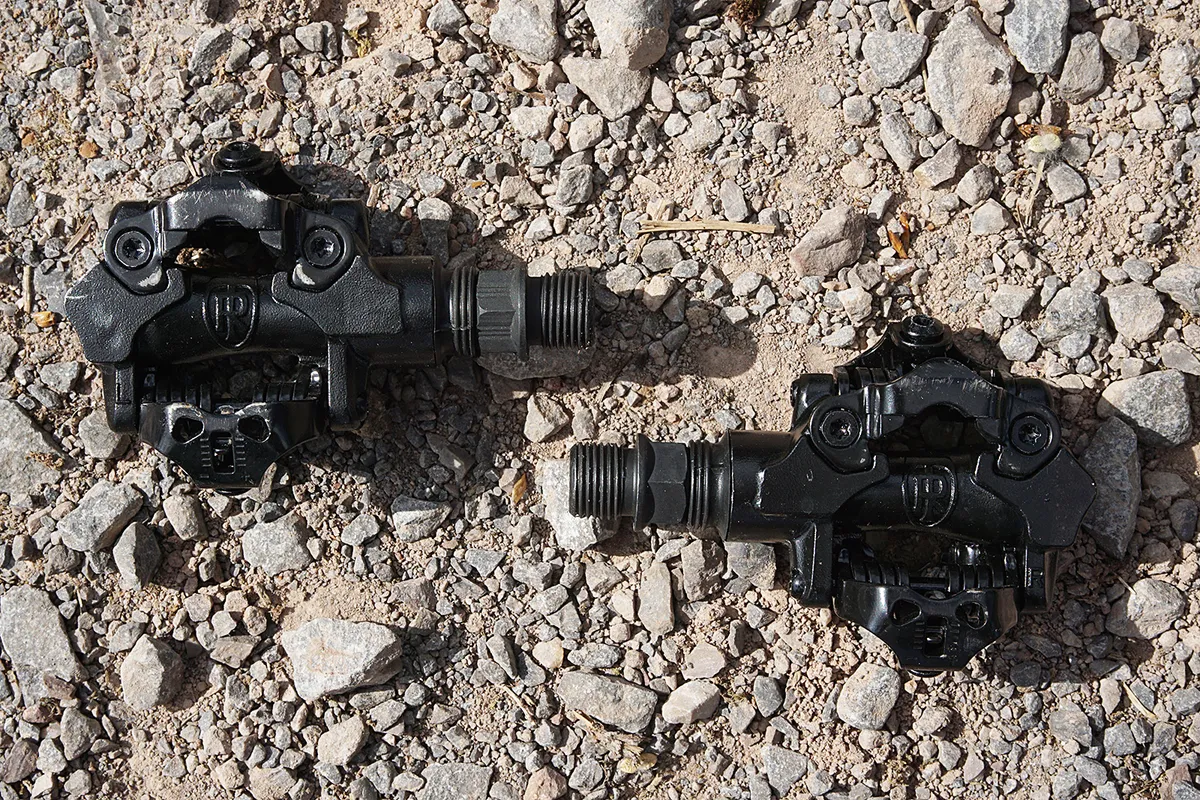
- £55 / €65 / $70 as tested
- 341g per pair; cleats 52g
The Ritchey Comp XCs are stylish and svelte SPD pedals with a cageless design. Costing half as much as the brand's elite WCS XC pedals, these gravel bike pedals are top value and serviceable.
The Comp XC works with standard SPD cleats and are easy to clip in and out of. Tension adjustment is also straightforward.
They come in an array of colours, but the paint is susceptible to scuffing.
Shimano PD-ME700

- £55 / €65 / $66 as tested
- 480g per pair; cleats 53g
The Shimano PD-ME700 are SPD pedals that give more foot support than narrower gravel bike pedals.
A larger surface area does make them heavier than some competitors.
Their quality build and serviceability means they could last years and years at a reasonable cost.
Entry and release tension is widely adjustable on the pedal body and the PD-ME700 gives a sensible degree of float.
Shimano PD-M530

- £39.99 / €47 / $48 / AU$70 as tested
- 458g per pair; cleats 55g
The budget-priced Shimano M530 is a trail-style pedal that has a substantial platform.
The mechanism is as good as anything Shimano produces. The pedal is hardy, very easy to use and adjust. They need very little in the way of maintenance.
If you do want to give them a service, the simple cup and cone bearings are simple to navigate.
These gravel bike pedals are a little weighty compared to more expensive rivals at 458g a pair ( 55g in cleats). The money saved and the fact these last an age makes them fit and forget favourites for year-round use.
Shimano PD-M8100 XT Race pedals

- £104.99 as tested
Shimano's SPD pedals are, pretty much, the benchmark clipless pedal, and their cage-less XT Race pedals perform as well as their pricier XTR Race pedals, in our experience.
The SPD system offers decent adjustment of retention tension, via a small Allen bolt that pre-loads the spring mechanism, meaning you can have them fairly loose for easy exit, or tight for a really secure feel. In their current form, the pedals shed mud well, though a quick scuff-kick generally clears more persistent mud, when needed.
We've not had issues clipping into the mechanism. Bearings seem smooth, reliable and serviceable too.
Time ATAC XC4

- £61 / €69 / $79 / AU$119 as tested
- 291g per pair; cleats 44g
The Time ATAC XC4s are among the lightest gravel bike pedals and shed mud effectively.
It didn't take long to become comfortable with Time's own cleat engagement system. Once clipped in to the ATAC XC4, you're unlikely to accidentally slip out and there's an adequate amount of float.
However, these gravel bike pedals only work with Time cleats.
Unlike on Shimano pedals, where you can tweak the entry and release tension with an Allen key, you have to buy different cleats to alter the force required to clip in and out. Otherwise they are serviceable.
Garmin Rally XC
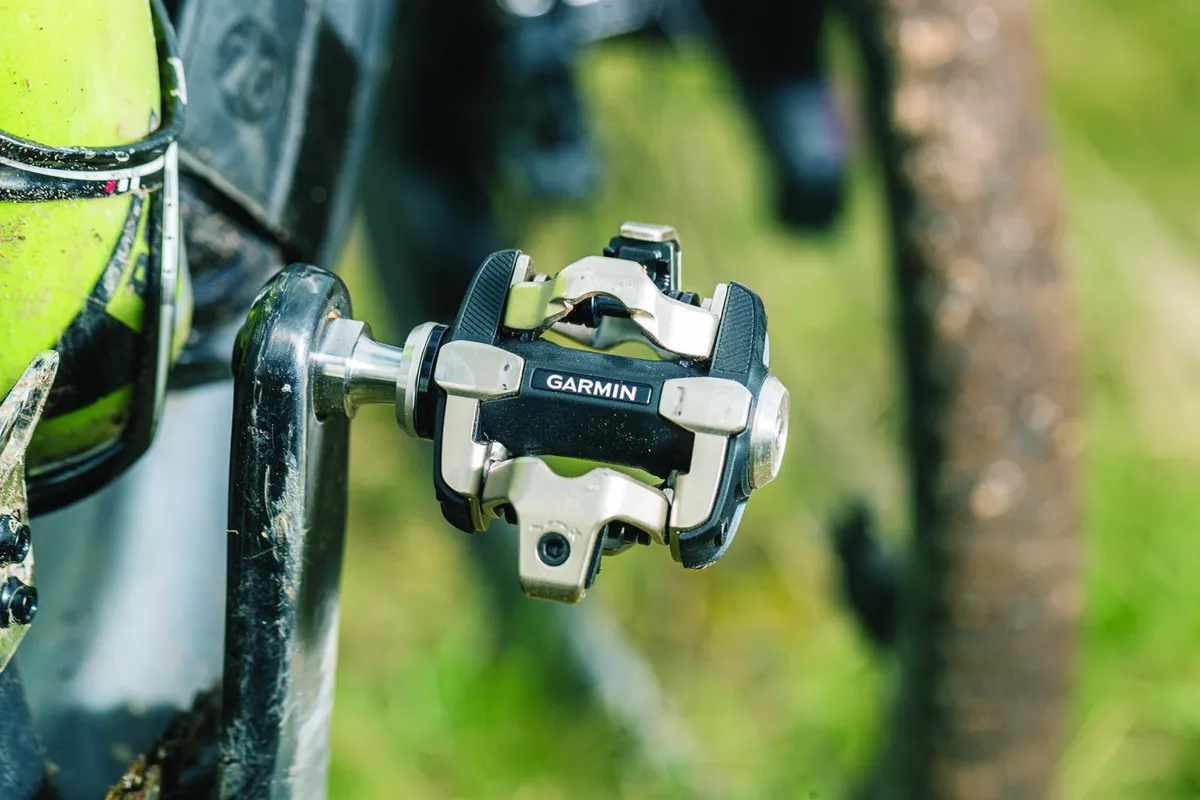
- £619.99 (single-sided) / £1,060 (dual) as tested
- 446g per pair
Garmin's latest pedal-based power meter proved reliable and accurate in our testing, suggesting these are a wise choice for riders looking to get valuable training data while out on their gravel bike.
Given they're a pedal-based system, they're easily swapped between bikes, further improving their utility for those who may also be jumping on a mountain bike. You can also swap the pedal body to work with road cleats, making them some of the most versatile pedals around.
We like the use of a Shimano cleat, so if you're already using SPD shoes and pedals, you won't need to worry about having separate shoes for different bikes.
The pedals are deeper than regular SPD pedals, so if you suffer from rock strikes it might be worth bearing this in mind. Functionally, though, they feel and operate identically to Shimano's excellent pedals, with the addition of decent power measurement, plenty of battery life and seamless integration with a Garmin bike computer.
While a pair are fairly pricey, the single-sided option will give you a reasonable guide to your power performance.
Also consider
The following pedals scored fewer than four stars, but are still worth considering if they suit your needs and budget.
LOOK X-Track Race Carbon
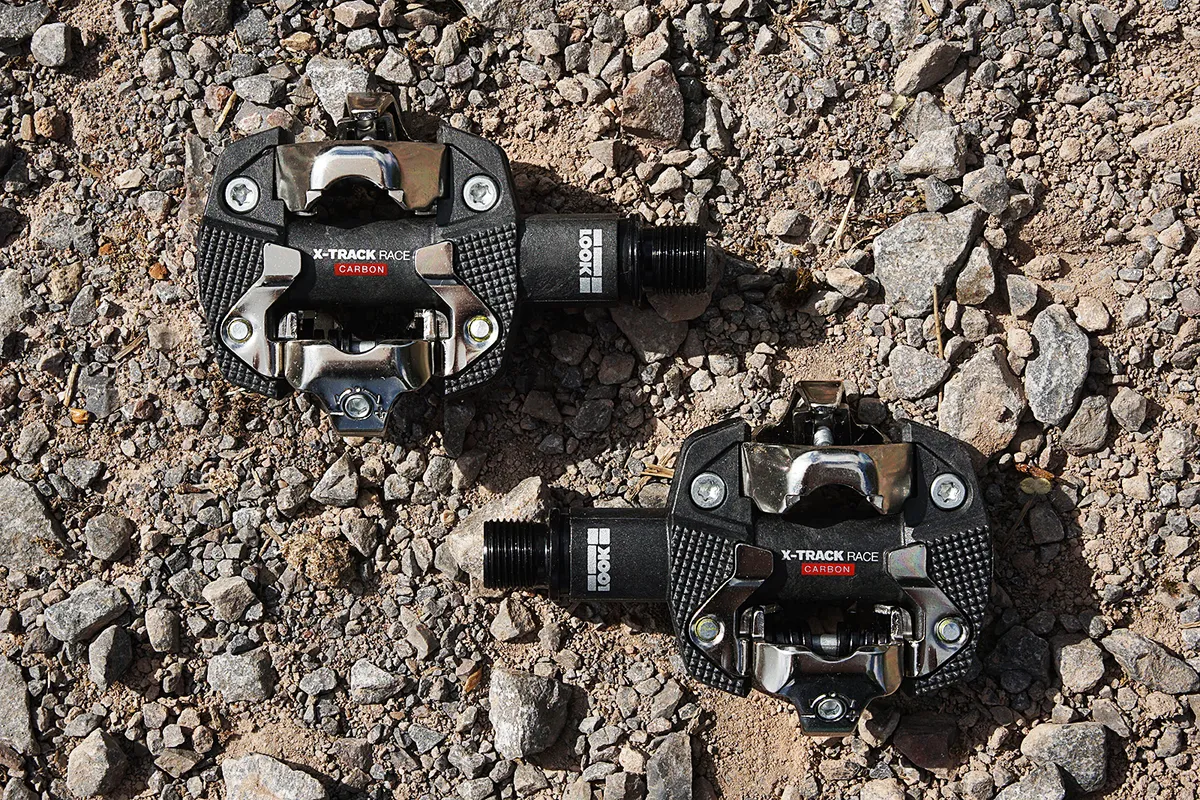
- £114 / €114 / $140 as tested
- 352g per pair; cleats 54g
Shoe engagement is easy with the LOOK X-Track Race Carbon if you're used to Shimano SPD pedals. LOOK's top-of-the-range off-road pedals are readily serviceable too.
However, the X-Track Race Carbon pedals are rather chunky and expensive. These racy gravel bike pedals are ill-suited to going off the beaten track because the sharp edges could gouge your ankles as you push your bike uphill.
Crankbrothers Candy 1
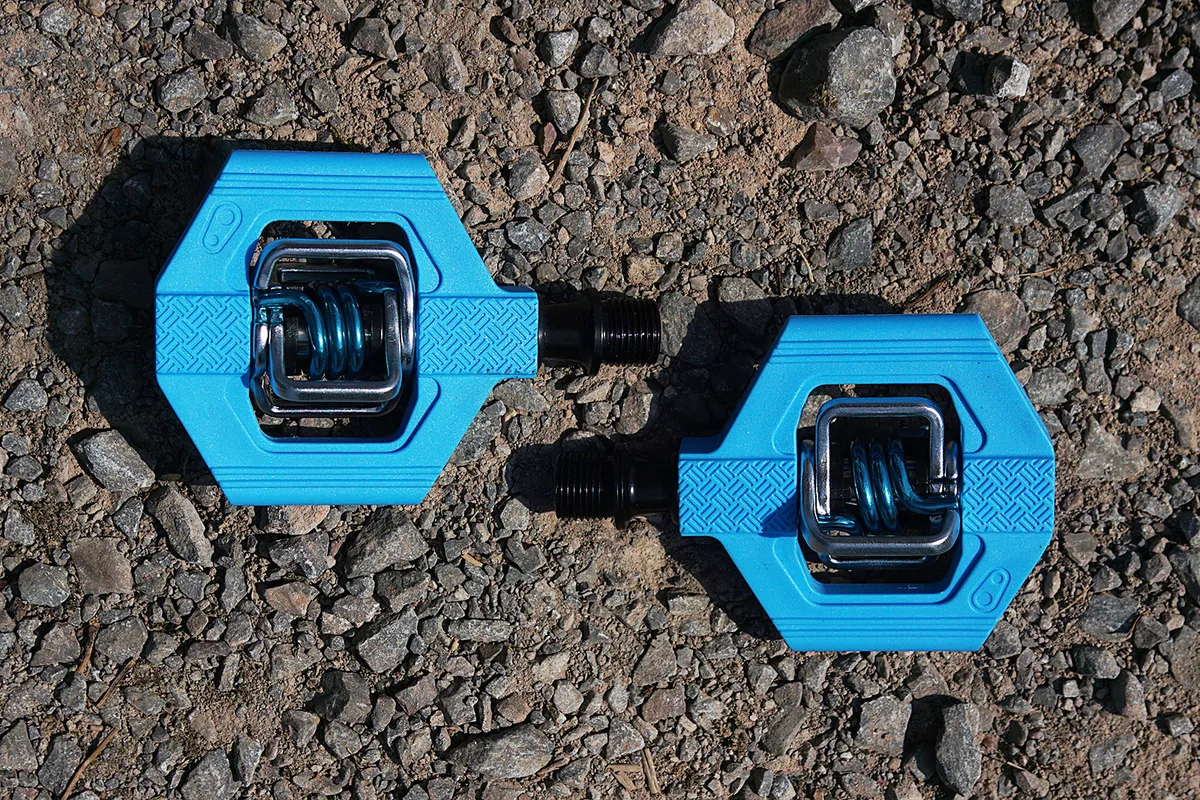
- £57 / €60 / $60 as tested
- 303g per pair; cleats 46g
The Crankbrothers Candy 1 gravel bike pedals are light, simple to service and rarely clog up with mud.
However, you have to switch cleats to change entry and release tension and the engagement system itself might be foreign to SPD habitués.
Gravel bike pedals buyer's guide: what to look for in gravel pedals
Double-sided entry
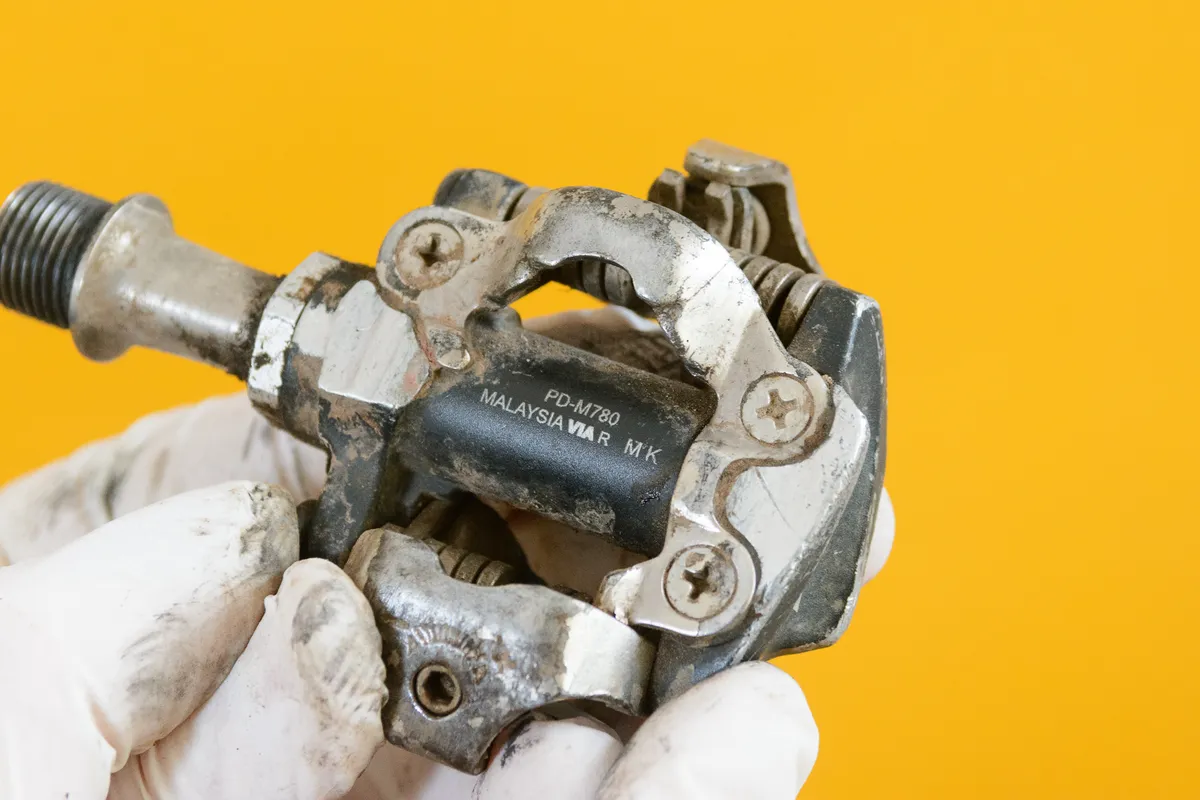
Many gravel bike pedals feature double-sided entry, or even four-sided entry in some cases, making engagement with the pedal really easy, especially compared to single-sided road bike pedals, for example.
As you’re more likely to be on and off the bike when riding off-road compared to on the road, being able to re-engage with your pedals and ride away with ease is even more important. It's also an essential cyclocross skill.
The same applies in cross-country mountain biking and several pedals in this list have 'XC' in their name, referring to that strand of off-road riding.
Mud clearance

If you ride throughout the year in conditions that get wet and muddy, you should consider how well your pedals shed mud – as anyone who's done cyclocross racing will already know. More open designs are optimised for mud clearance, which helps them to resist getting clogged up with debris and mud.
Walkable cleats
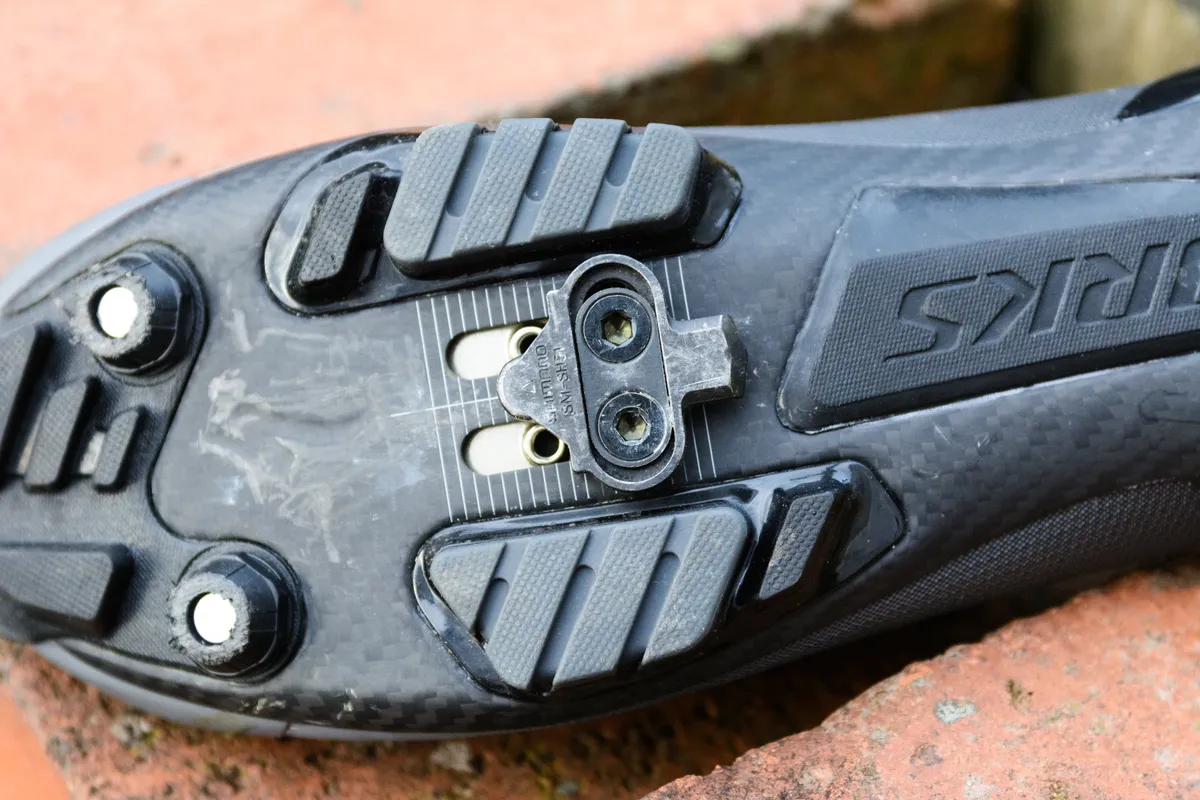
Recessed cleats that fit into a hollow in the shoe’s sole make walking off the bike much easier, and are typically preferred for gravel riding, where you’re more likely to find yourself off the bike, navigating around technical obstacles, through gates or even just enjoying some coffee stops.
These recessed cleats are typically found with SPD-style pedals, from manufacturers such as Shimano, Look and Crankbrothers.
Durability
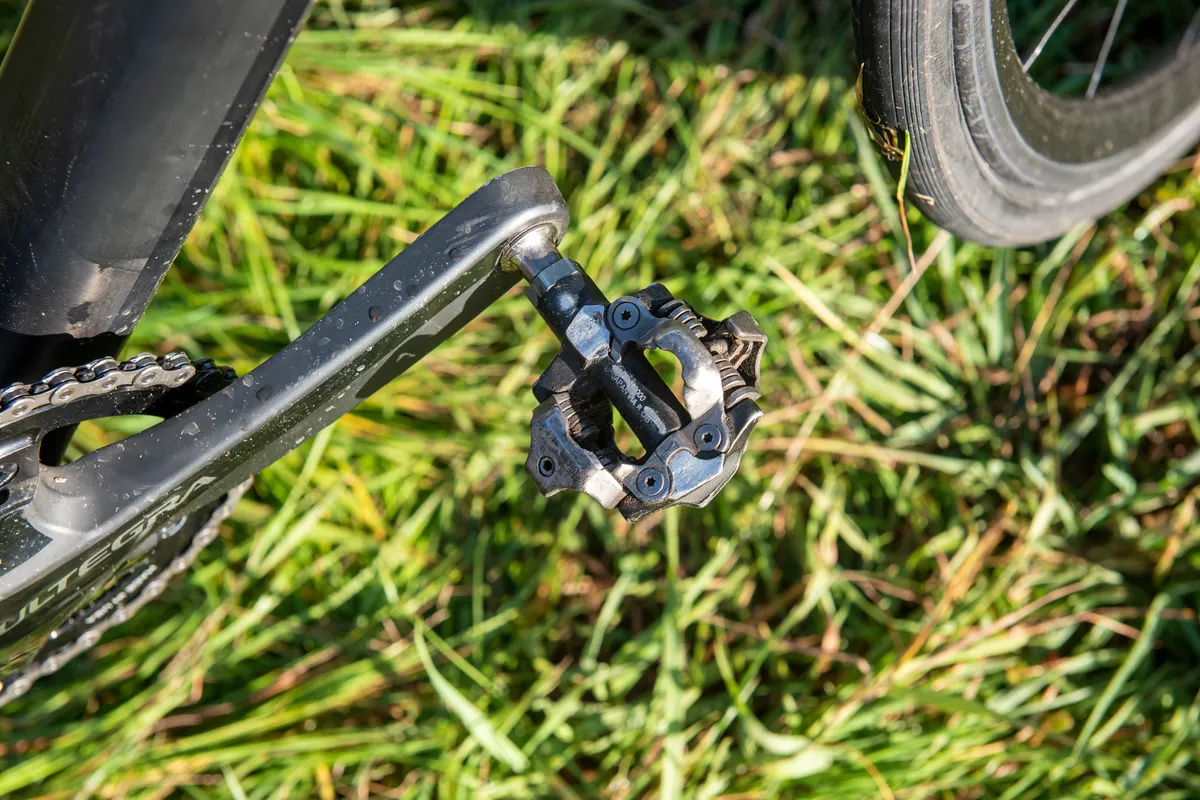
You should check how serviceable the pedals are before you purchase, because that could make the difference between them lasting a year or two, or decades.
Shimano typically uses cup and cone bearings, which you can easily service. Many other brands use sealed bearing systems, which are replaceable. Some pedal service kits are more readily available than others.
Materials

As you explore up through the budget ranges of pedals on offer, you’re likely to find differing materials and a focus on weight saving, just as you would with saddle rails, for example.
At higher tiers, you might find titanium options rather than steel, for example the Crankbrothers Eggbeater pedals.
What type of pedal should you use?
Clipless pedals
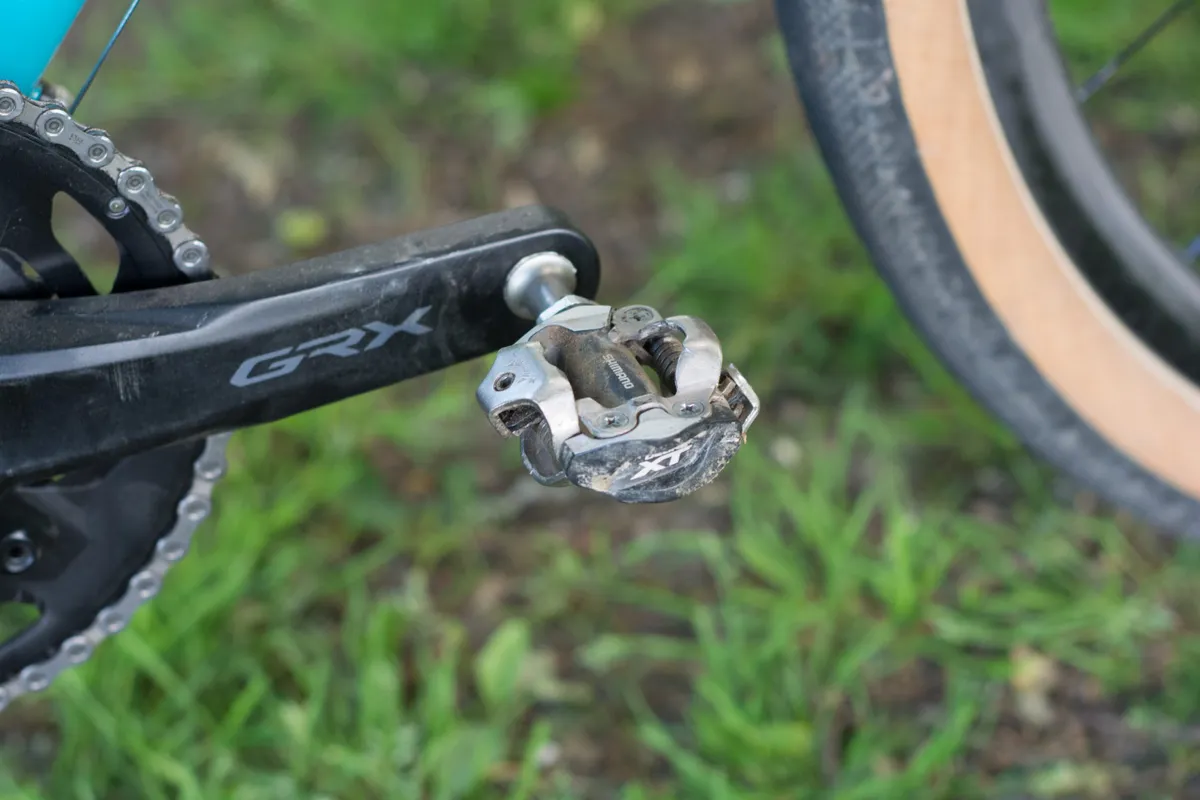
Clipless pedals are the most popular type of pedals for gravel bikes, allowing you to engage the pedal with cleats mounted on the soles of your gravel bike shoes. This gives a better power transfer than flat pedals, enabling you to power smoothly through the entire pedal stroke, including the upstroke.
These typically come in two types: SPD-style MTB pedals with metal, two-bolt cleats, or SPD-SL road-style pedals with plastic, three-bolt cleats.
Road or MTB pedals for gravel riding
If you’ve paid attention to professional gravel racing, you may have noticed some pros use road pedals.
These pedals have a larger platform than mountain bike pedals. Some claim this offers a more stable pedalling platform. Road pedals also tend to be lighter than mountain bike pedals and open up a wide range of shoes.
This may make them an attractive option for gravel racing. However, mountain bike pedals are generally advantageous for gravel riding because they use smaller, walkable cleats.
While professionals may race on gravel courses, which are probably as demanding as – or less than – Paris-Roubaix, we bet most gravel riders will take on more challenging terrain, where being able to walk without damaging your cleats is a clear advantage.
Trail pedals
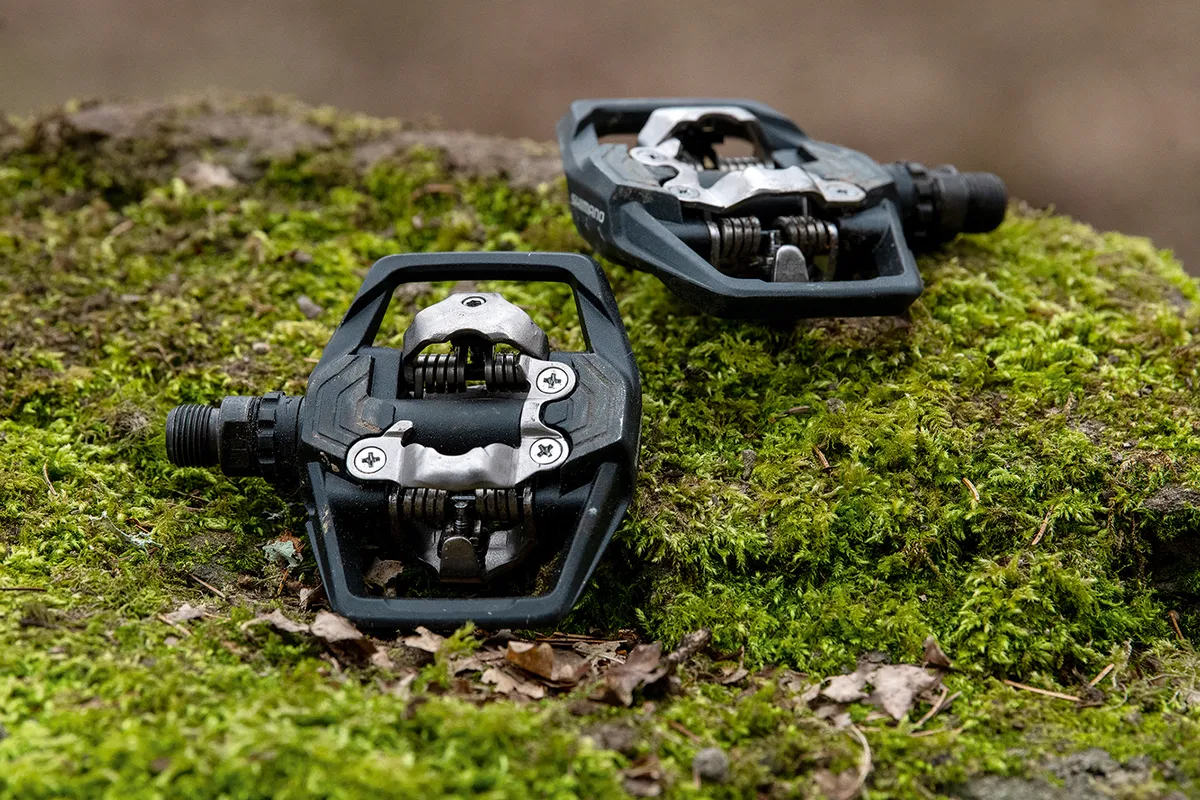
Trail pedals are similar in functionality to SPD-style clipless pedals, but also add a platform or cage, increasing the size of the contact area with the foot.
This larger pedal design yields several benefits: not only can it help reduce painful hotspots sometimes caused by more minimal pedal styles, but it can also give you greater purchase on the pedals as you clip in.
When it’s muddy or you’re riding technical features, it’s not always easy to clip in straight away. You might even want to keep unclipped, yet rest on the platform of the pedal if you’re likely to need to dab a foot. Here, the trail pedals help you keep pedalling, providing extra support compared to a minimalist clipless pedal.
Flat pedals

Some riders prefer a flat pedal for gravel riding, which you can team up with grippy flat MTB or casual shoes. These can be particularly handy if you’re planning on tackling more technical terrain, are riding in muckier conditions, plan on doing a fair bit of hike-a-bike or are relatively new to riding.
Flat pedals are very simple to use, so are perfect for those who are new to gravel riding, because they can inspire more confidence when tackling rougher terrain than cycling with cleats.
For more technical riding, being able to move your feet off the pedals to dab or shift weight can be really handy, so you quite often find riders who have come from a mountain biking background prefer to use flat pedals for gravel riding. Check out our guide to the best mountain bike pedals for many rugged options.
In really mucky conditions, clipless pedals can become clogged with mud, which makes clipping in and out harder. For this reason, some riders switch to flat pedals during the winter months.
Some more extreme gravel rides or bikepacking trips might involve hike-a-bike sections where it’s impossible to ride, so you have to walk alongside your bike. If you anticipate there being long sections of hike-a-bike on your ride, flat pedals might be a good idea, because it’s likely to be easier to walk in flat shoes than shoes with cleats.
What else do you need to consider?
Float

Pedal float describes the degree to which your foot can twist from side to side while clipped into clipless pedals. Certain manufacturers, such as Crankbrothers and Shimano, offer cleats with different levels of float.
A greater level of float gives you more movement through your ankles, knees and hips, and can be beneficial for riders who tend to suffer from knee problems when riding. A bike fit can determine the ideal amount of float for you.
Easy-release
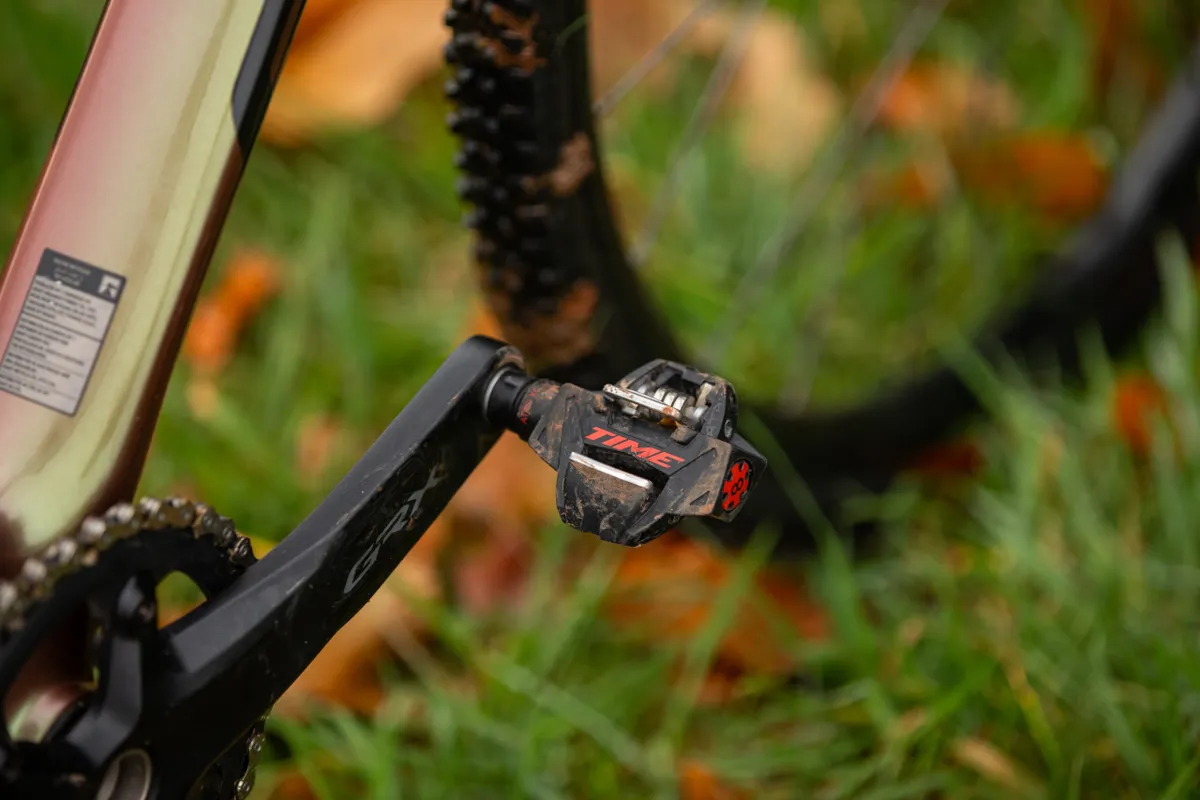
Some cleats also come in easy-release options, which means you can disengage from the pedal more easily through different directions, which can be reassuring if you’re nervous about being clipped in. Look out for these from brands including Shimano, Look and Crankbrothers.
Pedal pins
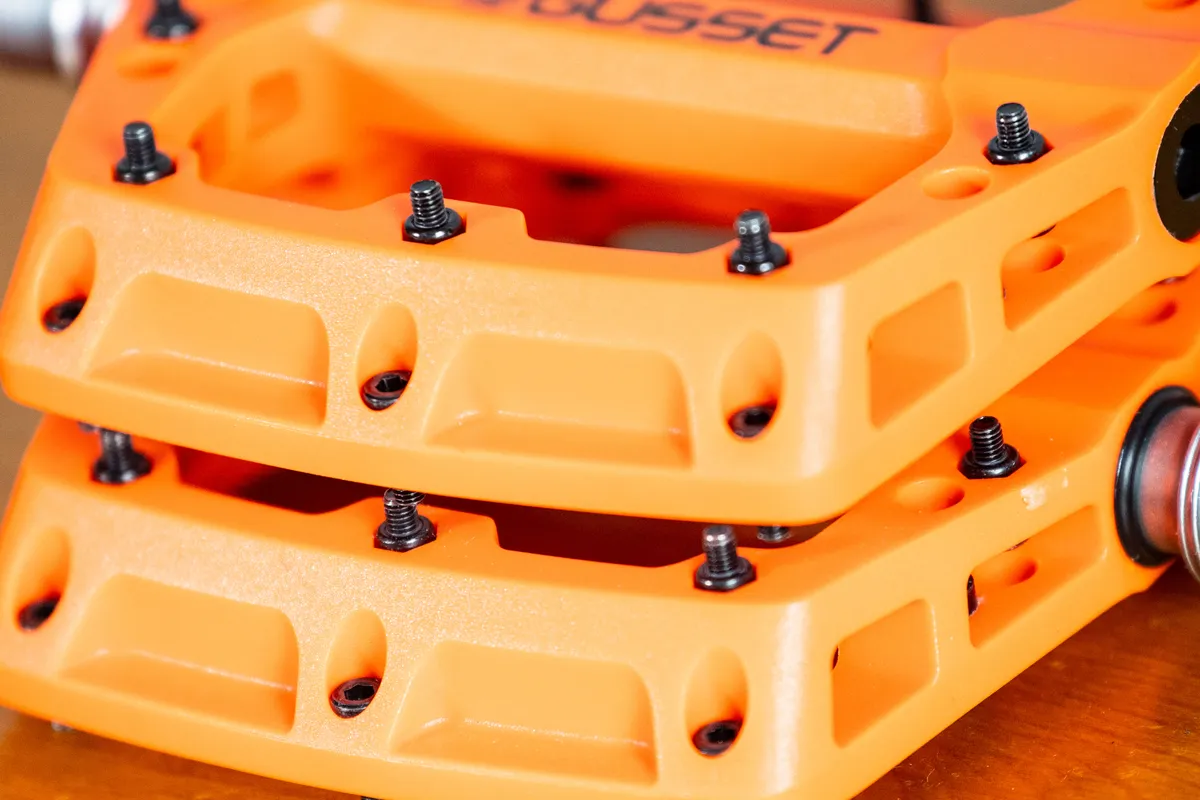
If you’re running flat pedals, the combination of pedal and shoe sole will determine how much grip you have, and hence how secure you feel on the pedals. For more grip, look out for flat pedals with more pronounced pins, or consider MTB flats with grippy rubber-compound soles, such as the Five Ten Trailcross shoes.
